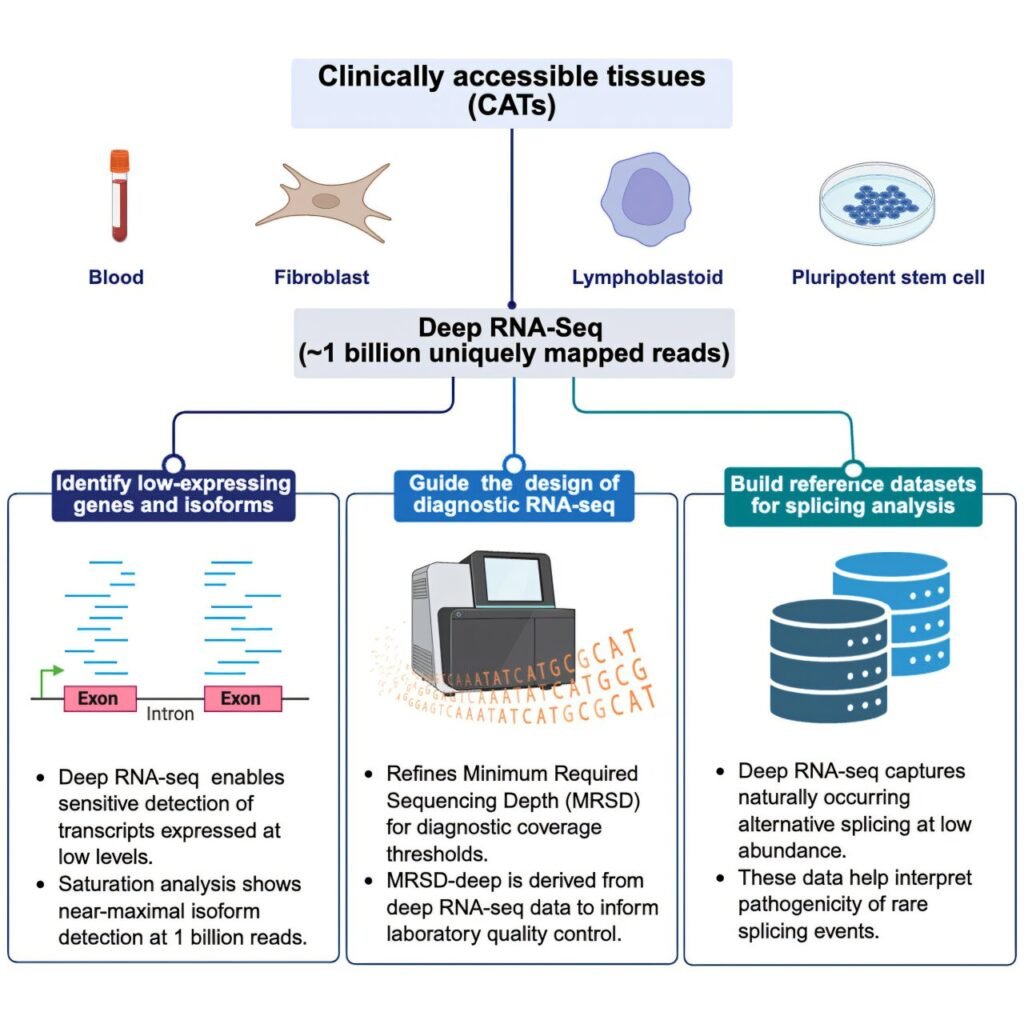RNA sequencing (RNA-seq) has emerged as a valuable tool in diagnosing Mendelian disorders, but the optimal sequencing depth for this technology has remained uncertain. A recent study published in the American Journal of Human Genetics by researchers at Baylor College of Medicine’s Medical Genetics Multiomics Laboratory (MGML) sheds light on the benefits of ultra-deep RNA sequencing in clinical diagnostics.
Traditionally, RNA-seq diagnostic protocols have utilized moderate sequencing depths, typically around 50-150 million reads. However, these depths may not always capture low-abundance transcripts and rare splicing events that are crucial for interpreting gene variants of uncertain significance. To address this limitation, the Baylor team explored the diagnostic potential of ultra-high depth RNA-seq, with sequencing depths reaching up to 1 billion reads.
Dr. Pengfei Liu, the corresponding author of the study and director of MGML, highlighted the advantages of ultra-deep sequencing in enhancing the detection of lowly expressed genes and transcripts. By employing the Ultima Genomics ultra-high depth RNA-seq platform, the researchers were able to uncover a significantly higher number of low-expression genes that would have been missed with traditional sequencing depths.
One of the key findings of the study was the ability of ultra-deep RNA sequencing to identify genes with low expression levels, particularly those associated with developmental and neurological disorders. While clinical diagnostic labs primarily analyze blood and skin samples, genes responsible for these disorders may not exhibit strong expression in these tissues. Through ultra-deep sequencing, the researchers demonstrated the potential to capture tissue-specific genes in blood samples, expanding the scope of clinical diagnostics.
Moreover, the data generated from this study has paved the way for future RNA-seq research. The team developed an online resource based on the deep RNA-seq data, which can estimate the necessary sequencing depth required for achieving a genetic diagnosis. Additionally, the tool can predict abnormal gene splicing patterns from deeply sequenced data of healthy individuals.
Looking ahead, the researchers plan to validate the clinical utility of ultra-deep RNA-seq and explore the development of a clinical test based on their findings. Dr. Liu emphasized the commitment of MGML to translating cutting-edge genomic technologies into practical clinical applications to enhance diagnostic rates for patients.
This study not only advances our understanding of the benefits of ultra-deep RNA sequencing in Mendelian disorder diagnostics but also underscores the importance of integrating innovative technologies into clinical practice. The research conducted by the Baylor College of Medicine team sets a precedent for future advancements in RNA-seq technology and its application in precision medicine.
For more information, you can access the original publication titled “The utility of ultra-deep RNA sequencing in Mendelian disorder diagnostics” in The American Journal of Human Genetics (2025) with DOI: 10.1016/j.ajhg.2025.09.013. This groundbreaking research was made possible by the dedicated team at Baylor College of Medicine’s Medical Genetics Multiomics Laboratory.
Provided by Baylor College of Medicine. For more information, visit their website at http://www.bcm.edu.


